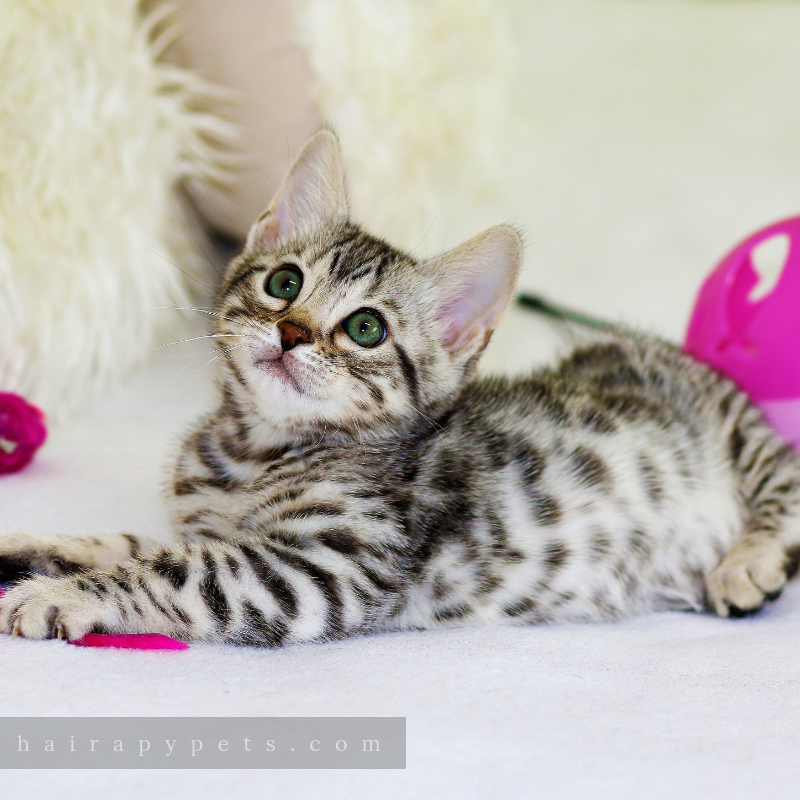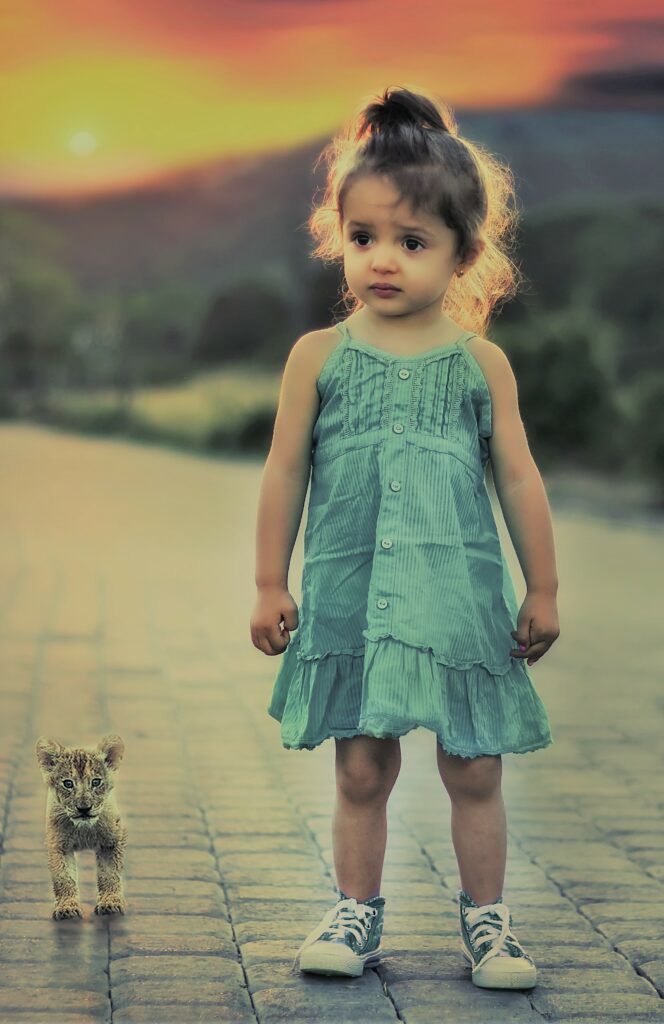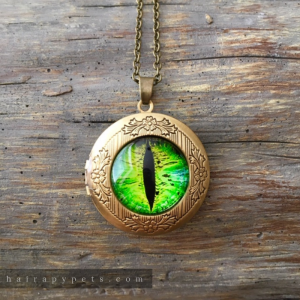
Much more often than not, cats make excellent companion animals and house pets. Their affectionate, spirited, and amusing essence fills a home with endless entertainment, character, and comfort. However, it can be easy to forget that your feline is wild at heart and has an inner beast that is always waiting for the opportunity to emerge. Cat owners have most likely experienced all the highs and lows of cohabitating with a cat and have learned to accept the bad with the good, taking things moment by moment. In one given moment your cat may be blissfully curled up with you, purring, rubbing its head fuzzies all over you, while the next moment you are scolded with a swat and bite for petting it one too many times. Although the good far outweighs the bad and the experience of bonding with a cat is highly gratifying and rewarding, please note that the key to living harmoniously is to provide a stimulating environment. This especially applies if yours is an indoor only cat. Unless you have a senior cat, which is in an entirely separate category, you must keep your cat stimulated inside due to their predatory nature – for the sake of both your sanity and theirs. Simply put, allow your cat to be a cat.
What results when you don’t can be varying degrees of aggression. I’ve learned that when a cat is acting out there is always a reason and often a solution for it, which typically includes walking away temporarily and/or making adjustments to their environment. Some cats are definitely wilder than others. My two-year old cat is no exception, which is how he obtained the nickname “Beastie Boy.” At least his occasional bite is somewhat gentle and does not break the skin. He knows when to hold himself back, luckily. I’m aware that with some cats this is not the case which can raise concern. Before giving up and deeming your cat a bad kitty, consider the possibilities of what could be causing the behavior. Not all cats display aggression. If yours does, identifying the cause and remedying the situation should result in successful management of the behavior. Read on for some possible reasons for feline aggression I have come to learn through personal experience.

Possibility #1:
Your cat doesn’t feel well. Sometimes they are sick or uncomfortable, and since they can’t come out and say that to you they will communicate it in a variety of ways, either consciously or subconsciously. Your job is to pay attention, especially since any veterinarian will tell you that feline instinct is to mask or downplay their pain to avoid vulnerability in nature. Cats are mostly predators but their size can also make them prey animals, hence their instinct tells them to keep their guard up. Always rule out physical discomfort or illness when you notice unusual behavior, giving them the benefit of the doubt first before assuming your cat is just being a punk. Ailments in pets often manifest in behavior.
Possibility #2:
Your cat is bored and wants attention. It’s a common misconception that cats are unaffected being left alone for long periods of time. This may be true for some, but I personally have never had such a cat. This does not mean that they don’t need their space sometimes. Trust me, they will let you know! My experience has taught me that domestic cats very much crave affection and attention to varying degrees and can act out when deprived of it. In addition, it can be a challenge keeping an indoor cat’s environment interesting, stimulating, dynamic, and lively.
There are many ways to do this, including building them an enclosed cat patio outside – also known as a “catio.” This way they can have the craved outdoor experience while remaining safe and at home. Another way is to place cat furniture around the home in the forms of multiple cat towers, window loungers, and even cat shelves on the walls. This applies to extremely dedicated feline lovers with the freedom to alter their home and with plenty of resources available to them, but it can certainly be done. For the sake of simplicity, however, I will discuss toys. Lots and lots of toys. But what’s more important than quantity is variety. A cat’s intelligence can be both a blessing and a curse because it becomes desensitized incredibly fast. New toys can be the cat’s meow one day, then merely floor ornaments the next. When it comes to your cat’s toys, think in terms of a revolving door. Cycling the same toys back around is perfectly acceptable to your feline, as long as enough time has passed in between introductions. In fact, the familiarity and memory of a long lost toy can bring excitement when the cat suddenly remembers how much fun the toy was – until it’s not again. But who cares? Your job is to just keep the rotation going. Your alternative is to eventually rack up an entire credit card in order to appease the cat by buying it a new toy every few days. Even I can’t justify that considering the fact we are dealing with a creature who finds a wadded up receipt or water bottle cap the most profound and entertaining discovery ever. In other words, you do not need to spend a lot of money.
Also keep in mind that no matter how many cat toys you place around the house, there is no substitute for interactive play. Having toys like a feather on a stick or ball on a string that you dangle around and let them chase is the ultimate form of play for a cat because they crave a challenge. Just make sure you put these types of toys away and out of site when you’re not using them so that the cat doesn’t ingest the string, which is potentially dangerous for their digestive tract.
Possibility #3:
Your cat is acting out because it is upset. Since they are intensely sensitive creatures, consider what may have changed in their environment that is causing the discord. It could be something as obvious as a recent move. If this is the case, just give your cat time to adjust to the new normal. It’s not always easy for animals to be hauled around with us through each of our major life choices.
There are countless possibilities why your cat may be upset, including being neglected; smothered with too much unwanted attention; a new, unfamiliar pet or person in the house; a dirty, neglected litter box; or a new brand of food that is not agreeing with its taste buds or stomach, just to a name a few. Use your imagination. The point is to be aware and thoughtful in order to remedy the situation and put your kitty back at peace. If the reason is not obvious to you, pay attention to patterns. When are you noticing the aggressive behavior the most and what can you associate the behavior with?
Possibility #4:
The least common possibility is that your cat is just naturally aggressive outside of your control. This could be related to previously unfortunate life experiences it had that left a permanent mark, or it could be due to feral genes. Either way, if you’ve already exhausted all other options, then your job at this point is to just show compassion and provide the kitty with the most love it will accept from you. Respect its boundaries and teach your kids to do the same. Obviously if the cat is aggressive outside of your comfort zone to the point that it is raising major concerns, the logical action for everyone involved would be to re-home it and find it somewhere that will be more suitable to live out its life. Someone else could be completely experienced in dealing with this type of cat, possibly bonding with it or taming it down. Or maybe it will just have a comfortable place to live where it will be provided with food and shelter and given space.
Another point to consider is that some cats are just better suited for the outdoors than they are indoors. As much as most of us want to protect and keep them all inside, keep in mind that this is really not the actual nature of most felines. The fact that humans have been able to domesticate them to the point we have is pretty remarkable. As much as I’m in favor of attempting to make all cats indoor-only cats, if you end up concluding that they will be better suited outdoors, there are ways to help make this the ultimate experience for them.
First of all, try finding a happy medium by installing a cat door so they can come and go as they please. This could very well alleviate the aggression because cats like to have freedom. If in extreme cases you just can’t have them indoors at all, providing them with a safe area on your porch, patio, or backyard with adequate shelter from the natural elements and cozy beds/blankets to sleep in is the humane thing to do. Even better, if you can bring them in at night, do that. This keeps them safe and snug. Also, don’t withhold the affection. Make a point to pet and give them love whenever you see them. Wild kitties need love too. In addition, keep completely current on their vet checkups and vaccinations. You should be doing this regardless of whether they are indoors or outdoors, but outdoor cats are exposed to even more threats and viruses. Lastly, provide them with as much food and water outside as you would an indoor cat. Just because cats are natural hunters does not mean they are completely self-sufficient and that the food supply is always available. They enjoy working for their food sometimes, but humans have domesticated cats over centuries, after all. They still need us.

Fully understanding and respecting your tiny tiger will ensure the best possible experience with them. One topic regarding cats that I have found there to be conflicting information about is eye contact and how to approach it with them. I’ve read that cats perceive it as a threat when we hold eye contact with them, while reading in entirely different articles that it communicates love to them. Both are true. In my experience it completely depends on my cat’s mood and my body language leading up to the encounter.
Animals intuitively pick up on many messages we subconsciously send out based on our visual cues, voice tone and volume, behavior, etc. If both my cat and I are relaxed and I do the slow blink, or “cat smile” at him while holding eye contact, he’ll typically reciprocate it, slowly blinking back at me while purring. This is usually followed by a kitten-like pose or the friendly gesture of exposing his belly, confirming to me it was well-received. In this example, the eye contact is an expression from both cat and human of love and affection. Those are the moments to practice mindfulness in and cherish. It is pretty meaningful and profound to have that kind of loving exchange considering we are different species. On the other hand, if my cat is feeling in any way playful or irritable and therefore aggressive, my eye contact tends to be returned by an eerie gaze he holds while coming towards me swiftly, sometimes even nipping me or baring those needle-sharp claws….and these are the moments that quickly bring me back to the realization that yes, we are an entirely different species.
The longer you have had this magnificent creature, the more you will pick up on its body language, cues, and sounds and adjust your approach accordingly if you want to maintain harmony. After all, they are the kings and queens of the house. It can occasionally be challenging, but you’ve got this….because you are an intelligent, creative, sensitive, patient, and perceptive human, which is why you love cats.
(Featured photo by Kim Davies)


I’ve read several good articles here. Certainly worth bookmarking for revisiting. I’m surprised how much effort you put into create such an excellent and informative website!
I love your writing, please keep it up!